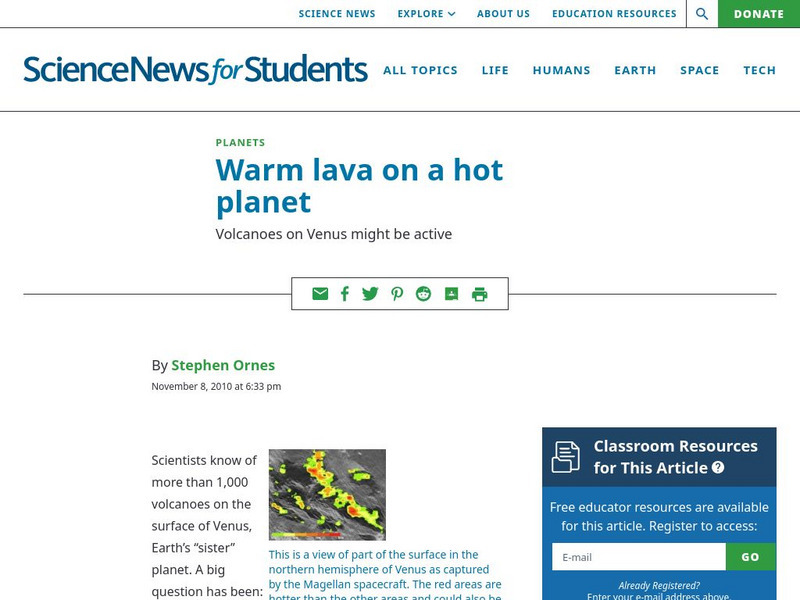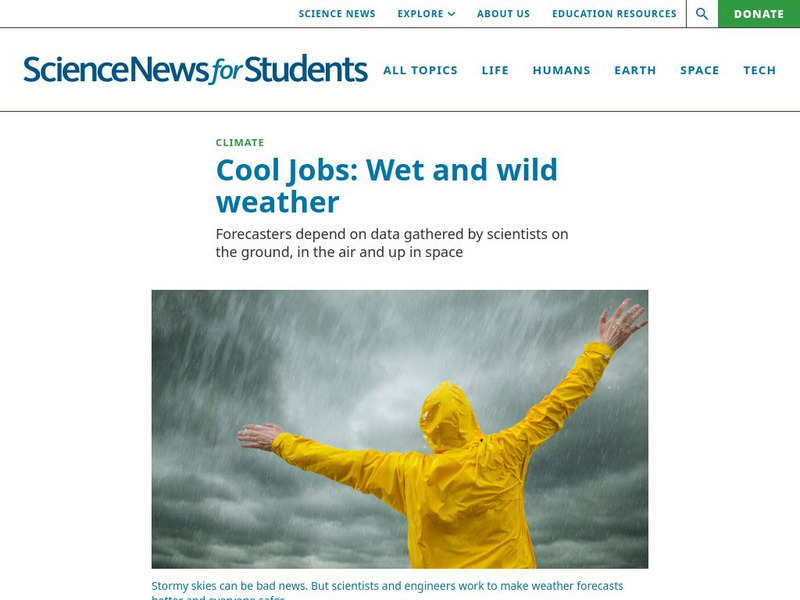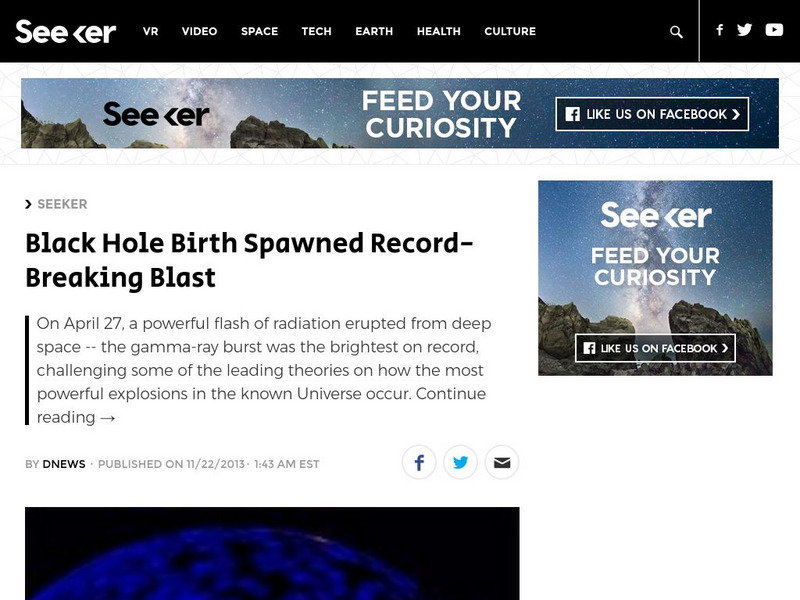NASA
Chasing Down a Satellite
Calculate the speed of the International Space Station. By reading the article, pupils learn about the concept of orbits. Scholars work through a formula to determine how fast the International Space Station is traveling to stay in...
NASA
Taking a Cold, Clear Look at the Universe
Take a look with another perspective. Pupils read to find out what portion of the electromagnetic spectrum a space telescope sees and the difficulties of viewing infrared radiation from other objects in space. Individuals discover how...
NASA
Speaking in Phases
Hear from deep space. Pupils learn how satellites transfer information back to Earth. They learn about three different ways to modulate radio waves and how a satellite sends information with only 0s and 1s. Using sound, class members...
NASA
From Smoke Signals to Cell Phones: Tracing How Technologies Evolve
Explore the science of space exploration. Pupils consider technological advances in propulsion, communication, power, navigation, and imaging. They select one of these areas and create a timeline of historical progress that contributed...
NASA
Catch a Gravitational Wave, Dude!
It is cowabunga time! Pupils read an article about the NASA LISA mission on gravitational waves and conduct additional research on them. The class participates in a science bowl type competition about gravitational waves. Panels of four...
NASA
Packing for a L-o-o-o-ng Trip to Mars
Pack just enough to fit. Crews determine what personal items to take with them on a trip to Mars. Each team must decide what to take with them on a two-and-a-half year trip to Mars and whether their items will fit within the allotted...
NASA
Taking Apart the Light
Break down light into spectra. Scholars learn how atoms emit and absorb photons and come to understand how this process allows scientists to identify different atoms based on either absorption lines or emission lines. Learners then...
NASA
Blinded by the Light!
Pupils learn of multiple ways astronomers look for planets outside of the solar system. By completing a hands-on activity, scholars discover that trying to see the planets directly because of the glare from the nearby star is nearly...
NASA
Keeping Nine Eyes on the Weather
Take a look at climate change from another angle. Readers learn about the MISR instrument on the Terra satellite and how it studies Earth. Pupils experience how the multiple cameras give scientists multiple views so they can better study...
DOGO Media
Dogo News: Quest to Find a Solution to Clean Space Junk
Read about the problem of litter in space. Includes video.
Other
Aaas Science News: Week of 2 24 14: Europe to Launch Hunt for Exoplanets
Article reports on the European Space Agency's upcoming program to search for exoplanet in space.
BBC
Bbc Newsround: Top 5 Amazing Space Discoveries
Read about some of the most important space discoveries in recent times.
Society for Science and the Public
Science News for Students: Asteroid Impacts May Have Sparked Life
Article reports on a new study that claims that the energy released from asteroid collisions may have sparked life on Earth. Includes a list of key vocabulary.
DOGO Media
Dogo News: Earthlings Beam 90,000 Friendly Messages to Mars
Article reports on recent mission by a private space company to beam messages to Mars from Earth. Includes video.
Seeker
Seeker: Week of 10 28 13: This Is the Coldest Place in the Universe
Article reports on the discovery by scientists that the Boomerang Nebula in the Milky Way is the coldest known place in space.
Society for Science and the Public
Science News for Students: Planetary Paparazzo
Discusses the information from the NASA spacecraft Messenger as it orbits Mercury and transmits photographs of the planet's surface to Earth.
Other
Malin Space Science Systems: Movements on Venus [Pdf]
This site is provided for by the Malin Space Science Systems. Reprint of an article from the "Journal of Geophysical Research", a publication of the American Geophysical Union. Very detailed analysis of Magellan images. Includes...
Society for Science and the Public
Science News for Students: So Many 'Earths'
Article reports on the recent discovery that many suns in the universe host "Earth-like" planets. Includes a vocabularly list.
Other
Aas Science News: Possible Orphan Black Hole
Article reports on the discovery of a supermassive object 90 million light-years from Earth that may be an orphan black hole.
NASA
Nasa: Reaching for the Stars
Find the latest news on research and development underway to use antimatter as a fuel for space vehicles. (April 12, 1999)
BBC
Bbc Newsround: One in Five Suns Has Habitable World
Using the Kepler telescope, NASA scientists have estimated that one in five of suns in space host an Earth-like planet in what is called the habitable zone.
Society for Science and the Public
Science News for Students: Warm Lava on a Hot Planet
Describes scientific research into volcanic activity on the surface of Venus. Using information transmitted from the orbiting Magellan spacecraft, data is collected. Includes a glossary of vocabulary terms. [ November 8, 2010]
Society for Science and the Public
Science News for Students: Cool Jobs: Wet and Wild Weather
How's the weather? Forecasts rely on scientists and engineers who collect and interpret data gathered on the ground, in the sky and way up in space.
Seeker
Seeker: Week of 11 25 13: Black Hole Birth Spawned Record Breaking Blast
Article reports on a recent record-breaking observation in space - the bright gamma-ray burst ever recorded.
Other popular searches
- Science Space
- Astronomy and Space Science
- Physical Science Space
- Earth and Space Science
- Science Space Experiment
- Space Science Vocabulary
- Science Space Lessons
- Space Science Astronomy
- Science Space Race
- Star Maps Science Space
- Earth Space Science
- Science Space Station
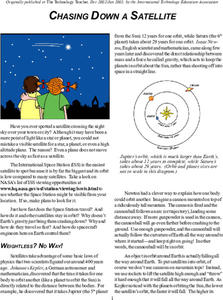


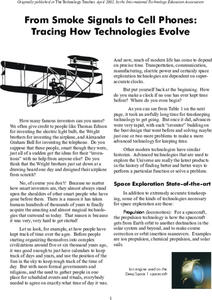
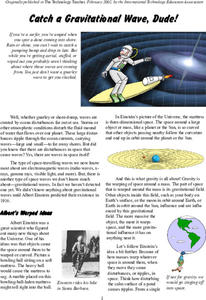




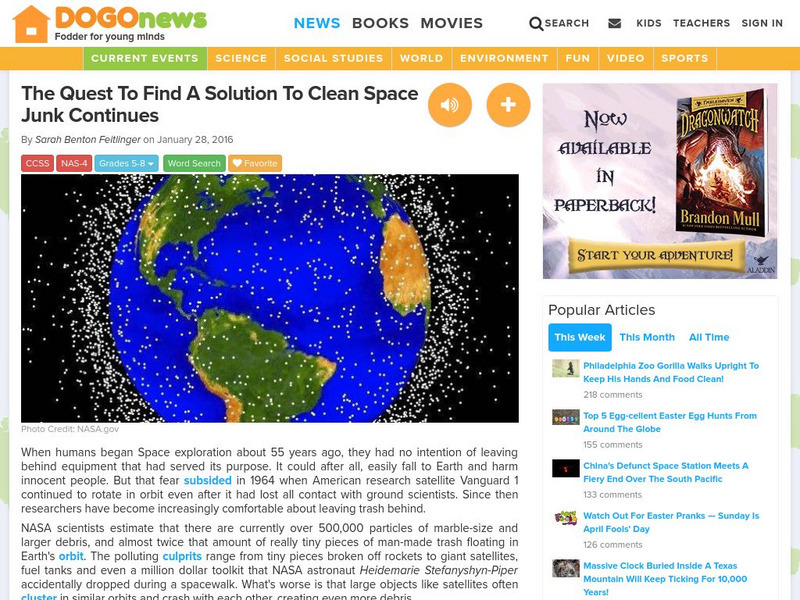


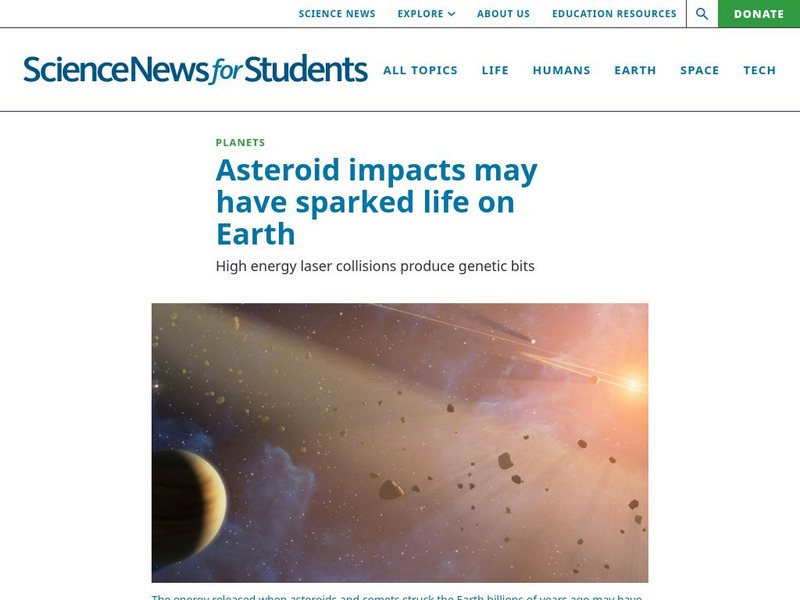
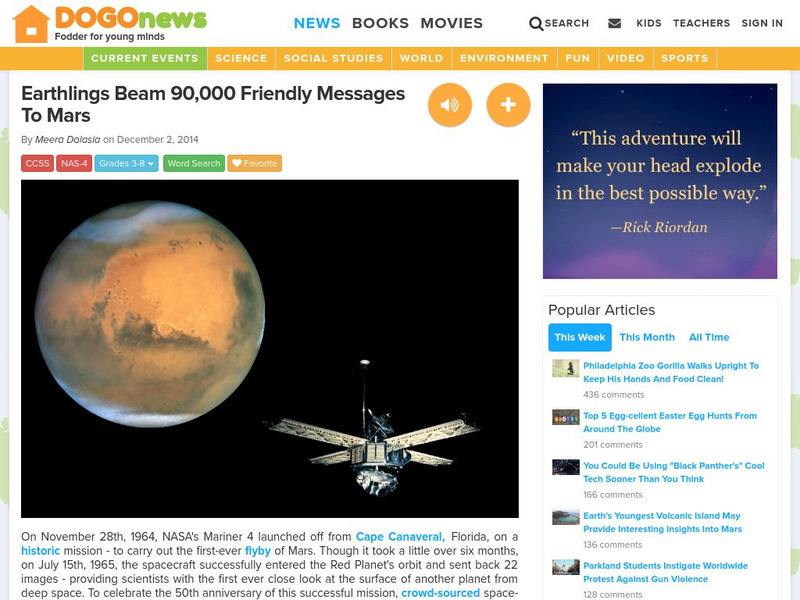
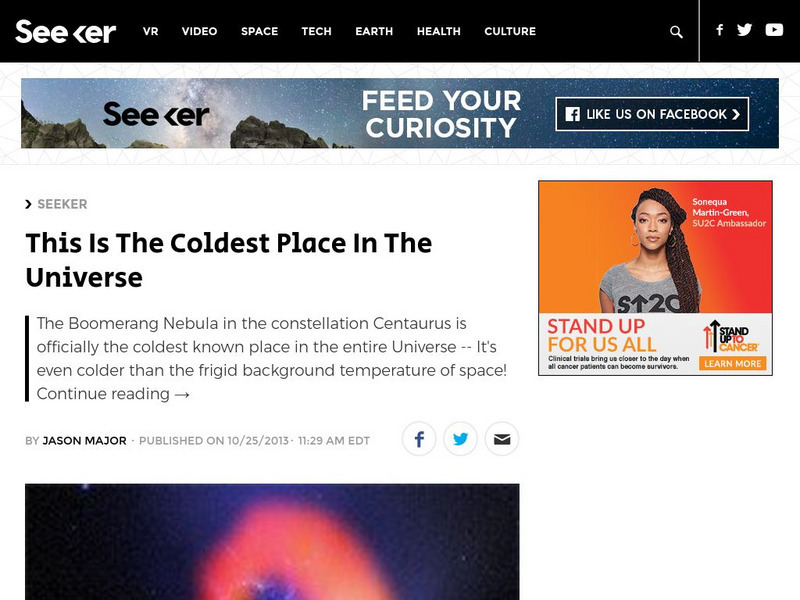

![Malin Space Science Systems: Movements on Venus [Pdf] Article Malin Space Science Systems: Movements on Venus [Pdf] Article](https://d15y2dacu3jp90.cloudfront.net/images/attachment_defaults/resource/large/FPO-knovation.png)



